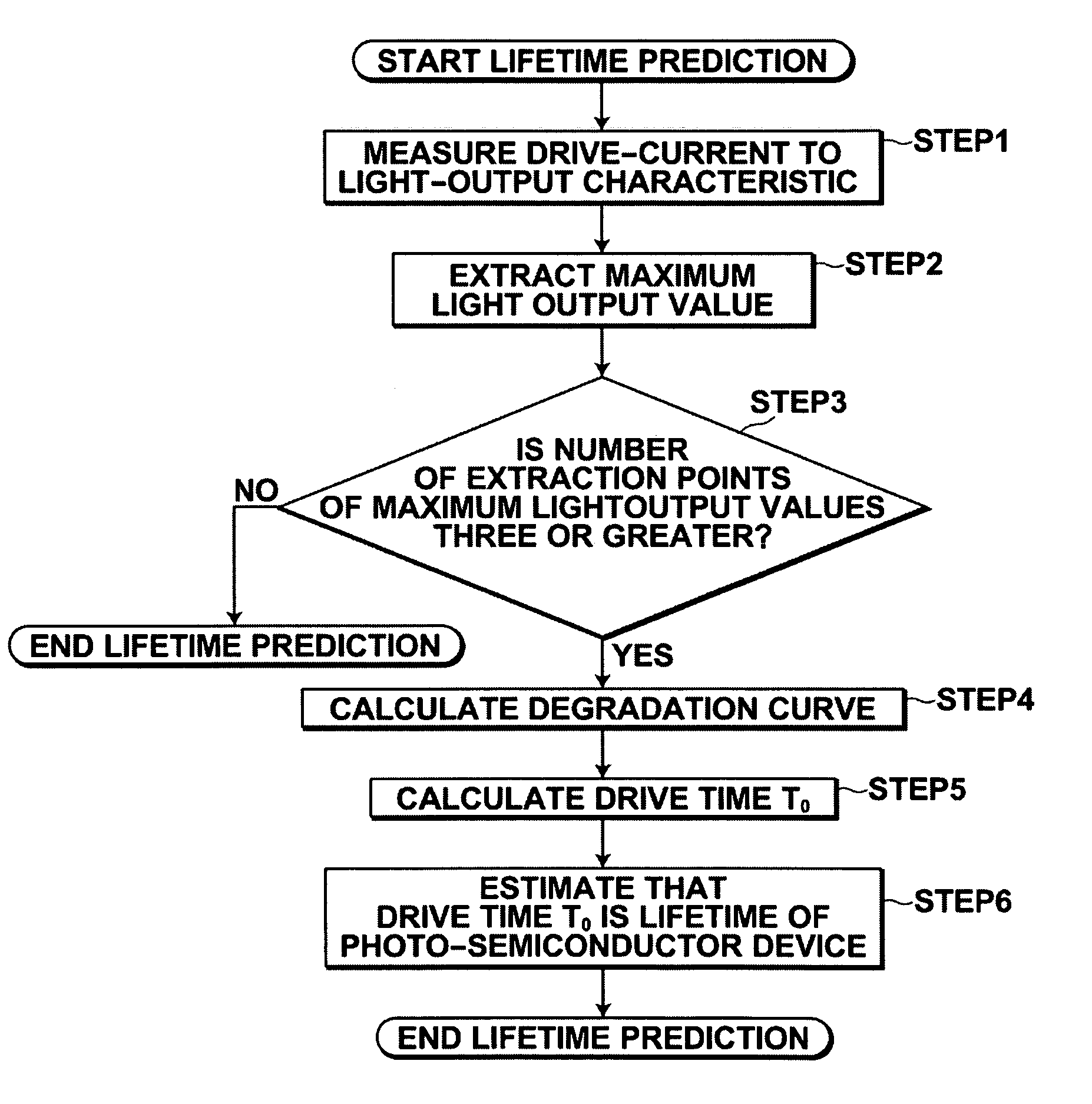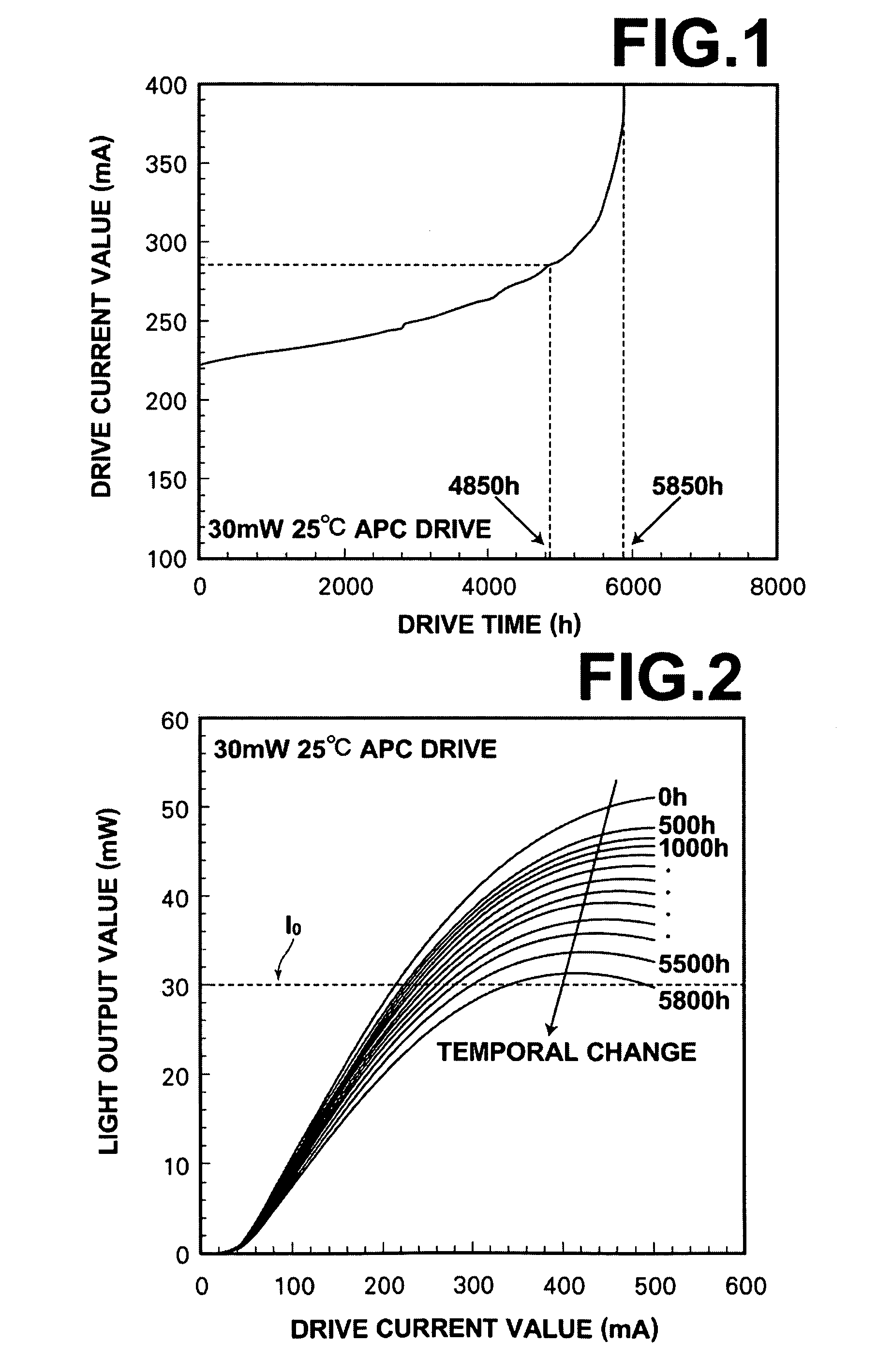Method for predicting lifetime of photo-semiconductor device and drive apparatus
a technology of photo-semiconductor and drive apparatus, which is applied in the direction of semiconductor lasers, instruments, mechanical means, etc., can solve the problems of endangering the life the maximum light output value of the light output of the photo-semiconductor device per se becomes lower, and the photo-semiconductor device eventually becomes inability to output light, so as to prevent a wasteful operation of stopping
- Summary
- Abstract
- Description
- Claims
- Application Information
AI Technical Summary
Benefits of technology
Problems solved by technology
Method used
Image
Examples
Embodiment Construction
[0045]Hereinafter, embodiments of the present invention will be described with reference to drawings. However, the present invention is not limited to the following embodiments.
“Method for Predicting Lifetime of Photo-Semiconductor Device”
[0046]A method for predicting the lifetime of a photo-semiconductor device according to the present invention utilizes the characteristic of the photo-semiconductor device that the lifetime of the photo-semiconductor device that outputs light at light output values including a maximum light output value that is restricted by thermal saturation is determined by a decrease in the maximum light output value due to degradation of the photo-semiconductor device.
[0047]The principle of the method for predicting the lifetime will be described in detail with reference to drawings.
[0048]As illustrated in FIG. 1, a phenomenon that a drive current value for outputting light of a drive light output value (30 mW, in this example) that is set in a drive apparatus...
PUM
 Login to View More
Login to View More Abstract
Description
Claims
Application Information
 Login to View More
Login to View More - R&D
- Intellectual Property
- Life Sciences
- Materials
- Tech Scout
- Unparalleled Data Quality
- Higher Quality Content
- 60% Fewer Hallucinations
Browse by: Latest US Patents, China's latest patents, Technical Efficacy Thesaurus, Application Domain, Technology Topic, Popular Technical Reports.
© 2025 PatSnap. All rights reserved.Legal|Privacy policy|Modern Slavery Act Transparency Statement|Sitemap|About US| Contact US: help@patsnap.com



